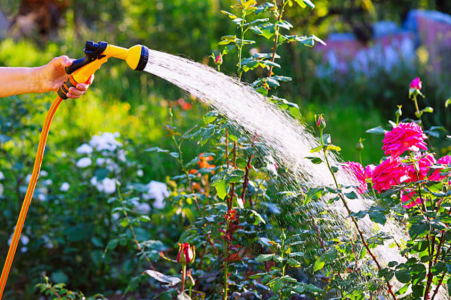Aussie home faces restrictions for decades, discover disturbing trend responsible!
By
Gian T
- Replies 14
Water is essential to life, supporting nature, food production, and daily needs.
Yet, challenges with supply are nothing new. Over time, we've adapted to dry conditions, but a new report suggests we may face even greater restrictions for years, impacting many aspects of life.
Experts warn that long-term solutions will be needed to manage the growing strain on resources.
The report, a comprehensive study led by Melbourne University, paints a concerning picture of the future.
It revealed an alarming trend of unprecedented water loss from land across the globe, a trend that, if left unchecked, is likely to have significant repercussions for household water usage and agriculture in Australia.
The research found that regions in Australia's south, southeast, and southwest are particularly vulnerable.
Over a three-year period from 2000 to 2002, soil moisture, groundwater, and surface water in dams and streams plummeted noticeably.
This decline didn't stop there; it continued, painting a worrying picture of the future.
Professor Dongryeol Ryu, the lead researcher, spoke about the variability of water availability in Australia.
'We tend to think about wet years and dry years, and we’ll have them still. But changes are gradually occurring in a specific direction with the land getting drier,' he said.
This shift is not immediately apparent across the entire continent, as some subtropical regions in the Northern Territory and Queensland have become wetter than in the twentieth century.
This contrast, Ryu warns, gives us a 'false sense of stability.'
The implications of this trend are far-reaching. Agriculture, the largest consumer of fresh water, is expected to be hit hard.
Ryu predicts increased competition for water resources between food production and environmental needs.
Ecosystems, which are vital for biodiversity and the health of our planet, will require supplemental water and may face limited access unless we improve our water use efficiency.
The study also highlighted the staggering global loss of soil moisture, which amounted to around 1614 gigatonnes between 2000 and 2002—almost double the ice loss from Greenland between 2002 and 2006.
The trend continued from 2003 to 2016, with an additional 1009 gigatonnes disappearing from the surface.
Changing rainfall patterns and increased evaporation due to rising air temperatures, both linked to climate change, are the primary drivers behind this loss.
One key takeaway from Ryu's research is the need for better groundwater monitoring systems worldwide.
Without these systems, tracking and managing the problem becomes a formidable challenge.
The findings, published in the journal Science, serve as a clarion call for action.
As Australians, we must confront the reality of these environmental changes and work together to find sustainable solutions.
Whether it's through water-saving technologies, better agricultural practices, or more responsible consumption, each of us has a role to play in safeguarding our water supply for the future.
As members of the Seniors Discount Club, we understand the importance of preserving our natural resources for future generations.
Together, let's continue to cherish and protect the unique and beautiful environment that makes Australia so special.
In other news, millions in Queensland, including Brisbane, Ipswich, and Logan, reported tap water's taste, smell, and color issues.
The problem was traced to naturally occurring methylisoborneol (MIB), which was formed due to heavy rainfall and hot weather. You can read more about it here.

Have you adopted any water-saving measures in your home? What are your concerns about the potential impact of long-term water restrictions on your daily life and the environment? Let us know in the comments below.
Yet, challenges with supply are nothing new. Over time, we've adapted to dry conditions, but a new report suggests we may face even greater restrictions for years, impacting many aspects of life.
Experts warn that long-term solutions will be needed to manage the growing strain on resources.
The report, a comprehensive study led by Melbourne University, paints a concerning picture of the future.
It revealed an alarming trend of unprecedented water loss from land across the globe, a trend that, if left unchecked, is likely to have significant repercussions for household water usage and agriculture in Australia.
The research found that regions in Australia's south, southeast, and southwest are particularly vulnerable.
Over a three-year period from 2000 to 2002, soil moisture, groundwater, and surface water in dams and streams plummeted noticeably.
This decline didn't stop there; it continued, painting a worrying picture of the future.
Professor Dongryeol Ryu, the lead researcher, spoke about the variability of water availability in Australia.
'We tend to think about wet years and dry years, and we’ll have them still. But changes are gradually occurring in a specific direction with the land getting drier,' he said.
This shift is not immediately apparent across the entire continent, as some subtropical regions in the Northern Territory and Queensland have become wetter than in the twentieth century.
This contrast, Ryu warns, gives us a 'false sense of stability.'
The implications of this trend are far-reaching. Agriculture, the largest consumer of fresh water, is expected to be hit hard.
Ryu predicts increased competition for water resources between food production and environmental needs.
Ecosystems, which are vital for biodiversity and the health of our planet, will require supplemental water and may face limited access unless we improve our water use efficiency.
The study also highlighted the staggering global loss of soil moisture, which amounted to around 1614 gigatonnes between 2000 and 2002—almost double the ice loss from Greenland between 2002 and 2006.
The trend continued from 2003 to 2016, with an additional 1009 gigatonnes disappearing from the surface.
Changing rainfall patterns and increased evaporation due to rising air temperatures, both linked to climate change, are the primary drivers behind this loss.
One key takeaway from Ryu's research is the need for better groundwater monitoring systems worldwide.
Without these systems, tracking and managing the problem becomes a formidable challenge.
The findings, published in the journal Science, serve as a clarion call for action.
As Australians, we must confront the reality of these environmental changes and work together to find sustainable solutions.
Whether it's through water-saving technologies, better agricultural practices, or more responsible consumption, each of us has a role to play in safeguarding our water supply for the future.
As members of the Seniors Discount Club, we understand the importance of preserving our natural resources for future generations.
Together, let's continue to cherish and protect the unique and beautiful environment that makes Australia so special.
The problem was traced to naturally occurring methylisoborneol (MIB), which was formed due to heavy rainfall and hot weather. You can read more about it here.
Key Takeaways
- Australia's populous regions may see long-term water restrictions due to unprecedented global water loss from the land.
- The Melbourne University study highlights the decline in soil moisture, groundwater, and surface water, which could affect household water use and agriculture.
- The research indicates that while Australia may experience wet and dry years, an overall trend toward land aridity is occurring, raising concerns over water use efficiency and ecosystem impacts.
- Changing rainfall patterns and increased evaporation from rising temperatures, linked to climate change, are driving water loss, emphasising the need for better groundwater monitoring systems.








